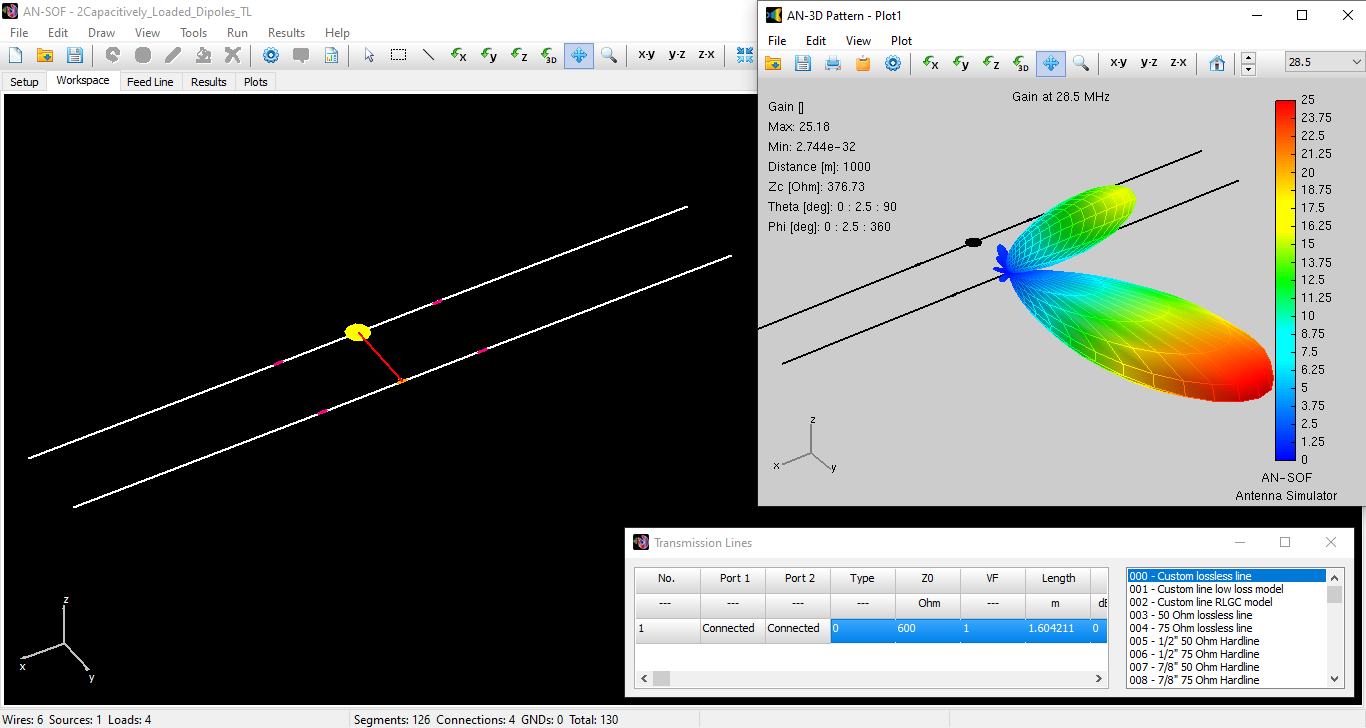Search for answers or browse our Knowledge Base.
Guides | Models | Validation | Blog
-
Guides
-
-
- Complete Workflow: Modeling, Feeding, and Tuning a 20m Band Dipole Antenna
- DIY Helix High Gain Directional Antenna: From Simulation to 3D Printing
- Evaluating EMF Compliance - Part 1: A Guide to Far-Field RF Exposure Assessments
- Design Guidelines for Skeleton Slot Antennas: A Simulation-Driven Approach
- Simplified Modeling for Microstrip Antennas on Ungrounded Dielectric Substrates: Accuracy Meets Simplicity
- Fast Modeling of a Monopole Supported by a Broadcast Tower
- Linking Log-Periodic Antenna Elements Using Transmission Lines
- Wave Matching Coefficient: Defining the Practical Near-Far Field Boundary
- AN-SOF Mastery: Adding Elevated Radials Quickly
- Enhancing Antenna Design: Project Merging in AN-SOF
- On the Modeling of Radio Masts
- The Equivalent Circuit of a Balun
- AN-SOF Antenna Simulation Best Practices: Checking and Correcting Model Errors
-
-
- AN-SOF 9: Taking Antenna Design Further with New Feeder and Tuner Calculators
- AN-SOF Antenna Simulation Software - Version 8.90 Release Notes
- AN-SOF 8.70: Enhancing Your Antenna Design Journey
- Introducing AN-SOF 8.50: Enhanced Antenna Design & Simulation Software
- Get Ready for the Next Level of Antenna Design: AN-SOF 8.50 is Coming Soon!
- Explore the Cutting-Edge World of AN-SOF Antenna Simulation Software!
- Upgrade to AN-SOF 8.20 - Unleash Your Potential
- AN-SOF 8: Elevating Antenna Simulation to the Next Level
- New Release: AN-SOF 7.90
- AN-SOF 7.80 is ready!
- New AN-SOF User Guide
- New Release: AN-SOF 7.50
- AN-SOF 7.20 is ready!
- New Release :: AN-SOF 7.10 ::
- AN-SOF 7.0 is Here!
- New Release :: AN-SOF 6.40 ::
- New Release :: AN-SOF 6.20 ::
- Show All Articles2 Collapse Articles
-
-
-
-
Models
-
- Modeling a Super J-Pole: A Look Inside a 5-Element Collinear Antenna
- Simulating the Ingenious Multiband Omnidirectional Dipole Antenna Design
- The Loop on Ground (LoG): A Compact Receiving Antenna with Directional Capabilities
- Precision Simulations with AN-SOF for Magnetic Loop Antennas
- Advantages of AN-SOF for Simulating 433 MHz Spring Helical Antennas for ISM & LoRa Applications
- Radio Mast Above Wire Screen
- Square Loop Antenna
- Receiving Loop Antenna
- Monopole Above Earth Ground
- Top-Loaded Short Monopole
- Half-Wave Dipole
- Folded Dipole
- Dipole Antenna
- The 5-in-1 J-Pole Antenna Solution for Multiband Communications
-
- Extended Double Zepp (EDZ): A Phased Array Solution for Directional Antenna Applications
- Transmission Line Feeding for Antennas: The Four-Square Array
- Log-Periodic Christmas Tree
- Enhancing VHF Performance: The Dual Reflector Moxon Antenna for 145 MHz
- Building a Compact High-Performance UHF Array with AN-SOF: A 4-Element Biquad Design
- Building a Beam: Modeling a 5-Element 2m Band Quad Array
- Broadside Dipole Array
- Log-Periodic Dipole Array
- Broadband Directional Antenna
- A Closer Look at the HF Skeleton Slot Antenna
- The 17m Band 2-Element Delta Loop Beam: A Compact, High-Gain Antenna for DX Enthusiasts
- Enhancing Satellite Links: The Moxon-Yagi Dual Band VHF/UHF Antenna
-
Validation
-
-
- Simple Dual Band Vertical Dipole for the 2m and 70cm Bands
- Linear Antenna Theory: Historical Approximations and Numerical Validation
- Validating Panel RBS Antenna with Dipole Radiators against IEC 62232
- Directivity of V Antennas
- Enhanced Methodology for Monopoles Above Radial Wire Ground Screens
- Dipole Gain and Radiation Resistance
- Convergence of the Dipole Input Impedance
- Impedance of Cylindrical Antennas
-
Extended Double Zepp (EDZ): A Phased Array Solution for Directional Antenna Applications
Introduction
A popular choice for radio enthusiasts since 1938, the Extended Double Zepp (EDZ) antenna boasts an impressive gain advantage over traditional half-wave dipoles. This is achieved by its extended length of approximately 1¼ wavelengths (1.25λ). Interestingly, the EDZ can also be viewed as two collinear elements, each roughly 0.62-0.64 wavelengths long, fed in phase with each other. However, this extended length comes with a drawback: the EDZ’s high capacitive reactance at the feed point makes it challenging to match with the commonly used 50-Ohm coaxial cable, posing a hurdle for amateur radio applications.
Phased Array for Directionality
When a directional radiation pattern is needed, a phased array consisting of two identical EDZ dipoles can be a valuable solution. This concept is demonstrated in the following AN-SOF example model:

This phased array operates at a frequency of 28.5 MHz (10-meter band). The separation between the two EDZ dipoles is approximately 1/4 wavelength. The driven element (the one connected to the feed line) has its feed point located in the center. The other element acts as a parasitic element, influencing the radiation pattern. The model incorporates a 600-Ohm two-wire transmission line feeding the parasitic element. Additionally, each dipole is loaded with two symmetrically placed capacitors on either side of the feed point. This configuration transforms the two capacitively loaded phased dipoles into a directional antenna with a more favorable input impedance.
Performance and Advantages
When positioned at a height of one wavelength above a ground plane, this phased array exhibits a radiation pattern with a tilt of approximately 12 degrees above the horizon. While a secondary lobe appears, the array achieves a respectable gain of 14 dBi. Notably, the input impedance is 59 + j106 Ohm, a value that is significantly easier to match to a 50-Ohm coaxial cable compared to the original high capacitive reactance of a single EDZ. This phased array design also offers a cost advantage over Yagi-Uda antennas with similar gain due to its simpler construction requiring less wiring.
Conclusion
The EDZ phased array presented here demonstrates a practical approach to achieving directionality and improved impedance matching characteristics. While it exhibits a tilted main lobe pattern, the antenna offers advantages in terms of gain and cost-effectiveness compared to traditional solutions like Yagi-Uda antennas.
